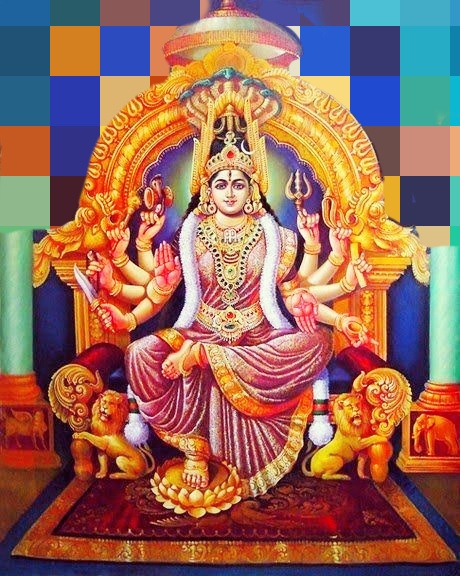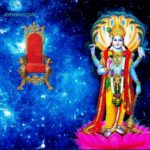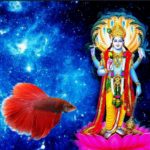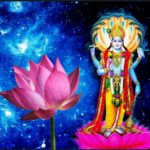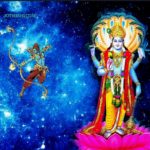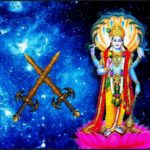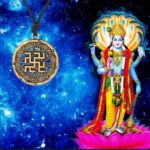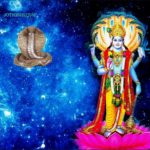Introduction to Lalitha Sahasranamam – 1000 names of Goddess Lalitha.
Lalitha Sahasranama is from the Brahmanda Purana and a prayer to the Godess Lalitha Devi, who is the Divine Mother in the form of Shakti – the supreme power.“Lalitha”also known as Lord Shiva’s wife Shri Parvathi and means “She Who Plays” and “Spontaneous”.
Lalita Sahasranama contains a thousand names of the Hindu mother goddess Lalita. The names are organized in hymns (stotras) and is the only Sahasranama(1000 names) that does not repeat a single name.
Lalita Sahasranama begins by calling the goddess Shri Mata (the great mother), Shri Maharajni (the great queen) and Shrimat Simhasaneshwari (the queen sitting on the lion-throne).
Story of the Lalitha Sahasranama:
This stotra (hymn which praises) occurs in Brahmanda purana and discussion between Hayagreeva and Agasthya. Hayagreeva (An incarnation of Vishnu with Horse Head) taught Rishi Agasthya the 1000 names of Godess Lalitha.
Lord Shiva married Sati Devi who was the daughter of Daksha. Paramashiva was not invited for the great sacrified organised and conducted by Daksh but Sati wanted to go and attended the function. Sati ended her life by jumping into the fire as her lord was insulted. Consequently at the behest of Paramashiva – Daksha was killed and later given life with a goat’s head. Post this incident Paramashiva entered into deep meditation.
Sati took birth as the daughter of the mountains and started her penance to get Lord Shiva as her husband this birth as well.
Meanwhile the devas were scared of Sura Padma who had a boon that he could be killed only by a son of Shiva and Parvathy. Manmatha (God of Love) was requested by all Devas to wake Shiva from his deep meditation and he shot his flower arrows at Paramashiva. Paramashiva woke up and opened his third eye and burnt the God of love into ashes. The Devas and Rathi Devi, wife of Manmatha requested Paramashiva to give life to Manmatha.
Paramashiva stared at the ashes and incarnated Bhandasura heeding to the request and who ruled from the city called Shonitha pura.He started troubling the devas.The devas then sought the advice of Sage Narada who advised them to conduct a fire sacrifice.
From the fire (Chidagni Kunda) rose “Sri Lalitha Tripura Sundari”.
Lalitha Tripura Sundari – Beauty (Sundari) of the the Three worlds (Tripura) was extremely beautiful and described with:

Dark thick long hair with scent of Champaka, Asoka and Punnaga flowers.
Musk thilaka on her forehead
Eyelids which appeared as if it is the gate of the house of God of love
Eyes like fish playing in the beauteous lake of her face
Nose with studs which shined more than the stars
Ears with sun and moon as studs
Cheeks which were like mirror of Padmaraga
Beautiful white teeth
Chewing Thamboola with camphor
Voice sweeter than the sound emanating from Veena of Sarswathi
A beautiful smile that Lord Shiva himself could not take his eyes off
Wearing Mangala soothra and necklaces with beautiful shining studs
Breasts which were capable of buying the invaluable love of Kameswara
Having row of faint beautiful hair raising from her belly and stomach with three pretty folds, wearing red silk tied with a string with red bells.
Having thighs which steal the heart of Kameshwara and knees which looked like crowns made of precious gems with voluptuous legs and upper part of the feet resembling the back of tortoise
Feet which resembled the lamps made of gems which could dispel worries from the mind of devotees and a body with the golden red colour.
Lalithambika was given in marriage to Lord Kameshwara and made to stay in Sree Nagara at the top of Maha Meru Mountain.
Sree nagara had 25 streets circling it.
They are made of iron, steel, copper, lead, alloy made of five metals, silver, gold, the white Pushpa raga stone, the red Padmaraga stone. Onyx, diamond, Vaidoorya, Indra neela (topaz), pearl, Marakatha, coral, nine gems and mixture of gems and precious stones.
In the eighth street was the forest of Kadambas presided by Syamala.
In the fifteenth street lives the Ashta Digh palakas.
Indra (East) – Airavata (the white elephant).
Agni (Southeast) – Mesha (the male goat).
Yama (South) on Mahisha (the male buffalo).
Nirriti/Varuna (West) – Makara (the crocodile).
Vayu (North West) – Mruga (the spotted deer).
South West – Ashwa (horse).
Kubera (North) – Nara (Man)
Eesaana (Northeast) – Vrishbha (bull)
In the sixteenth lives Varahi/Dandini who is her commander in chief. Syamala also has a house here.
In the seventeenth street live the different Yoginis.
In the eighteenth street lives Maha Vishnu.
In the nineteenth street lives Esana
In the twentieth lives Thara Devi
In the twenty first lives Varuni
In the twenty second Kurukulla, the enchantress representing pride
In the twenty third Marthanda Bhairawa
In the twenty fourth the moon
In the twenty fifth Manmatha – the god of love.
In the center of Srinagara is the Maha Padma Vana (The great lotus forest) and within it the Chintamani Griha (The house of holy thought).
In its north east is the Chid Agni kunda and on both sides of its eastern gate are the houses of Manthrini and Dhandini and in its four gates stand the Chaduramnaya gods.
Inside is the “Sri Chakra” and on the throne of Pancha Brahmas on the Bindu Peeta called sarvanandamaya (universal happiness) sits Maha Tripura Sundari.
Sri Chakra:
The square – Trilokya mohanam(The most beautiful in the three worlds)
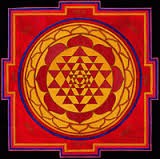
The sixteen petalled lotus called Sarvasa paripoorakam(The fulfiller of all desires)
The eight petalled lotus called Sarvasamksopanam(The cleanser)
The sixteen corner figure called Sarva sowbagyam (all luck)
The external ten cornered figure called Sarvartha sadhakam (giver of all assets)
The internal ten cornered figure called Sarva raksha karam(All protector)
The eight cornered figure called Sarva roka haram(cure of all diseases)
Triangle called Sarva siddhi pradam(giver of all powers)
And the dot called Sarvananda mayam (all pleasures).
The devas prayed her to kill Bhandasura and she started the war with Bandasura accompanied by the powers called anima, mahima, Brahmi, Kaumari, Vaishnavi, Varahi, Mahendri, Chamundi, Maha Lakshmi, , Nitya Devaths and Avarna Devathas who occupy the Sri Chakra.Sampatkari devi was the captain of the elephant regiment and Aswarooda devi was the captain of the cavalry.
The army was commanded by Dhandini riding on the Charriot called Giri Chakra assisted by Manthrini riding on the chariot called Geya Chakra. Jwala malini protected the army by creating a fire ring around it. ParaShakthi rode in the center on the chariot of Sri Chakra.Nithya Devi destroyed a large chunk of Bandasura’s armies, Bala Devi killed the son of Bandasura, and Manthrini and Dhandini killed his brothers called Vishanga and Vishukra.
As the Asura blocked the marching army, Sri Lalitha Tripura sundari created Ganesha with the help of Kameshwara to remove the blockade.Then Bandasura created the asuras called Hiranyaksha, Hiranya Kasipu and Ravana.The Devi created the ten avatars of Vishnu and destroyed them.
Shri Lalita killed the army using Pasupathastra and killed him with Kameshwarasthra. All the gods praised her and then recreated Manmatha for the good of the world. This story is contained in the first 84 names of the first 34 slokas of Lalitha Sahasra Nama.




